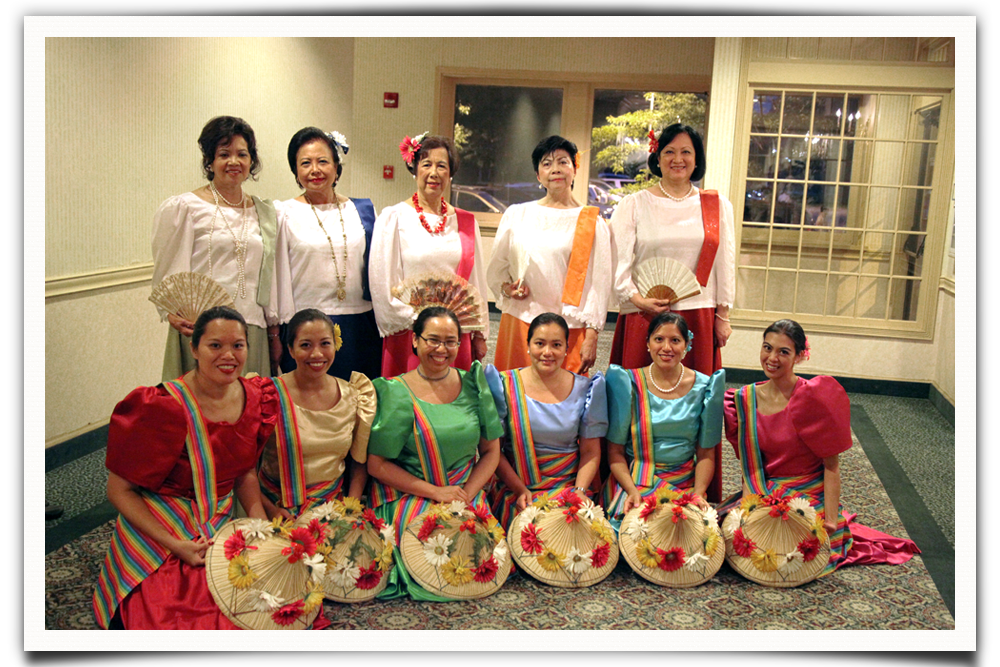August 2012 Cultural Feature: Filipino Folk Dance
 There are many different types of Filipino dances varying in influence and region. Types of Filipino dance include Cordillera, Muslim, tribal, rural, and Spanish style dances.
There are many different types of Filipino dances varying in influence and region. Types of Filipino dance include Cordillera, Muslim, tribal, rural, and Spanish style dances.
Within the cordillera dances, there is Banga, Bendayan, Lumagen/Tachok, Manmanok, Ragsaksakan, Salisid, Salip, Tarektek, and Uyaoy/Uyauy. The Banga dance illustrates the grace and strength of women in the Kalinga tribe. Women performing the Banga balance heavy pots on their heads while dancing to beat of wind chimes. This mimics Kalinga women collecting and transporting water. Another dance, called Lumagen or Tachok, is performed to celebrate happy occasions. When Lumagen is performed, it is meant to symbolize flying birds and is musically-paired to the beat of gongs. Another cordillera dance, Salisid, is the dance to show courtship. In the Salisid dance, a male and a female performer represent a rooster attempting to attract a hen.[4]
Tribal dances include Malakas at Maganda, Kadal Blelah, Kadal Tahaw, Binaylan, Bagobo Rice Cycle, and Dugso. Malakas at Maganda is a national folklore dance. It tells the story of the origin of the Filipino people on the islands. Another dance, called the Binaylan dance, tells the story of a hen, the hen’s baby, and a hawk. In this dance, the hawk is said to control a tribe’s well-being, and is killed by hunters after attempting to harm the hen’s baby.[5]
Two examples of traditional Filipino dances are Tinikling and Binasuan and many more. Filipinos have unique folk dances like tinikling where assistants take two long bamboo sticks rapidly and in rhythm, clap sticks for dancers to artistically and daringly try to avoid getting their feet caught between them. Also in the southern part of the Philippines, there is another dance called singkil using long bamboo poles found in tinikling; however, it is primarily a dance showing off lavish Muslim royalty. In this dance, there are four bamboo sticks arranged in a tic-tac-toe pattern in which the dancers exploit every position of these clashing sticks. Dancers can be found trying to avoid all 4 bamboo sticks all together in the middle. They can also try to dance an entire rotation around the middle avoiding all sticks. Usually these stick dances performed in teamwork fashion not solo. The Singkil dance is identifiable with the use of umbrellas and silk clothing.
via Wikipedia


